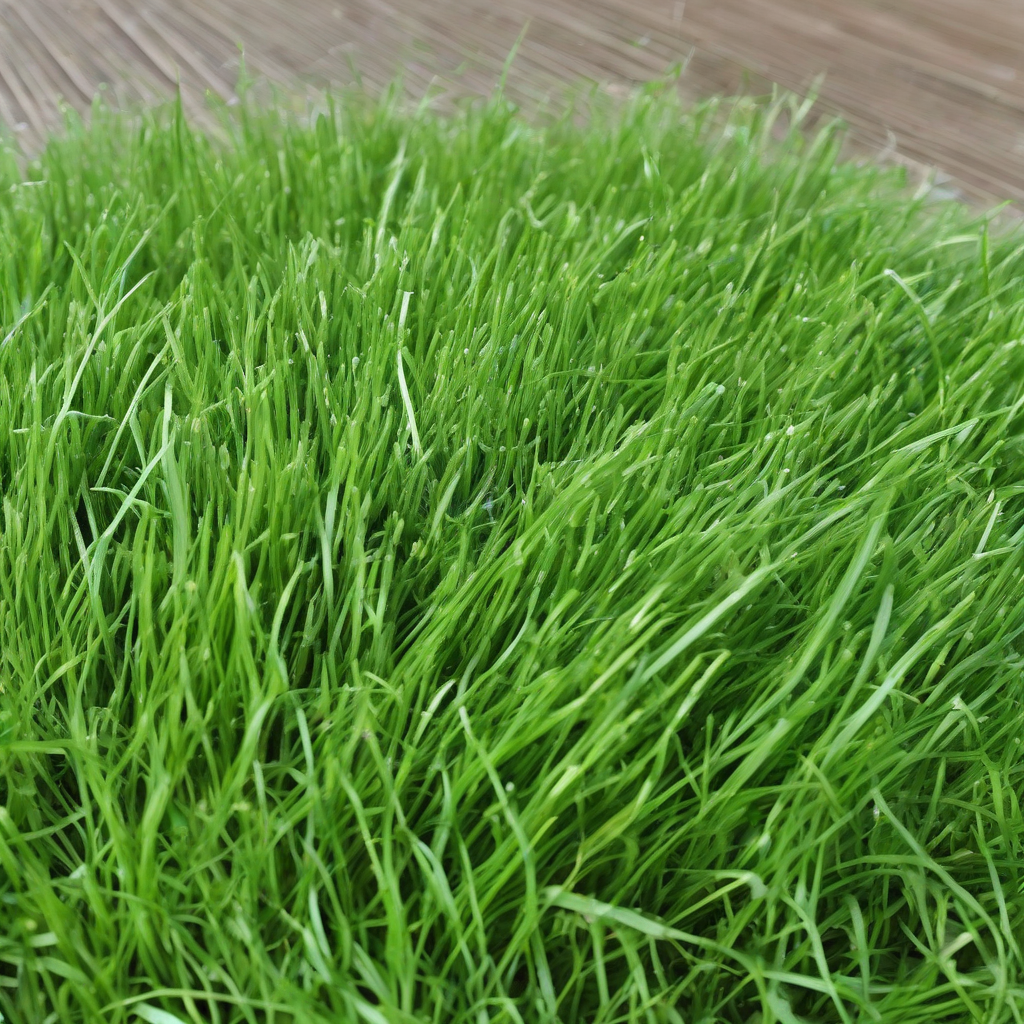Achieve a Lush, Vibrant Lawn: A Comprehensive Guide to Lawn Health

Achieve a Lush, Vibrant Lawn: A Comprehensive Guide to Lawn Health
A healthy lawn is the foundation of a beautiful outdoor space. It's not just about aesthetics; a thriving lawn contributes to a healthy ecosystem, provides a natural buffer against erosion, and even enhances your home's curb appeal. But achieving that picture-perfect lawn requires more than just mowing and watering. This comprehensive guide will equip you with the knowledge and strategies to revitalize your lawn, ensuring it remains a vibrant and resilient part of your property.
Understanding Lawn Health
A healthy lawn is characterized by:
- Dense, even growth: A healthy lawn has a thick, uniform covering of grass, leaving little room for weeds to thrive.
- Deep root system: Strong roots provide stability, allow for better water and nutrient absorption, and enhance drought tolerance.
- Vibrant color: A healthy lawn will display a rich, emerald green color, indicating healthy chlorophyll production.
- Resilience to stress: A healthy lawn can withstand environmental challenges like drought, disease, and insect infestations.
Essential Steps to Improve Lawn Health
Improving your lawn's health is a journey, not a quick fix. Here's a breakdown of the key steps involved:
1. Soil Testing: Unlocking the Secrets Beneath Your Feet
Your lawn's health starts with the soil. Understanding your soil's pH, nutrient levels, and texture is crucial for creating a thriving environment for your grass.
- Conduct a soil test: This can be done through a home test kit or by sending a sample to a laboratory. A soil test provides valuable insights into your soil's composition, helping you identify nutrient deficiencies and adjust your fertilization strategies.
- Amend your soil: Based on the test results, add amendments like compost, lime, or other soil conditioners to improve soil structure, drainage, and nutrient content.
- Consider adding compost: Compost not only enriches the soil with essential nutrients but also improves soil aeration, water retention, and microbial activity, creating a healthy environment for your grass roots.
2. Choosing the Right Grass Type
Selecting the right grass type for your climate, soil conditions, and desired aesthetic is crucial.
- Research different grass varieties: Consider factors like sun tolerance, drought resistance, foot traffic, and maintenance requirements.
- Assess your local climate: Choose grass types suited to your region's temperature, rainfall, and humidity.
- Consider your lawn's use: Choose a grass type that can withstand the level of foot traffic and activity your lawn experiences.
3. Establishing a Proper Mowing Routine
Proper mowing is critical for maintaining a healthy and attractive lawn.
- Mow at the correct height: Different grass types have ideal mowing heights. Research your chosen grass type to determine the appropriate height for your lawn.
- Use a sharp mower blade: A sharp blade provides a clean cut, reducing stress on the grass and preventing browning or tearing.
- Practice the "1/3 Rule": Never remove more than one-third of the grass blade height during each mowing session to promote healthy growth.
- Vary your mowing patterns: Alternating mowing patterns (e.g., back and forth, diagonal) helps prevent soil compaction and promotes even growth.
4. Watering Wisely
Proper watering is essential, but it's not just about quantity; it's about timing and technique.
- Water deeply and infrequently: Aim for deep watering sessions (soaking the roots), rather than frequent, shallow watering, which encourages shallow root systems.
- Monitor your lawn's moisture: Use a soil moisture meter to assess the water levels in your lawn.
- Consider using a sprinkler system: A well-designed sprinkler system can ensure efficient and consistent watering, maximizing water usage and reducing water waste.
- Avoid watering during the hottest part of the day: Water early in the morning or late in the evening to minimize evaporation.
5. Fertilizing for Optimal Growth
Fertilizing your lawn provides essential nutrients to support healthy growth and lush green color.
- Use a balanced fertilizer: Choose a fertilizer that contains the correct ratio of nitrogen (N), phosphorus (P), and potassium (K) to meet your lawn's needs.
- Consider slow-release fertilizers: These fertilizers release nutrients gradually over time, providing a steady supply of nutrients without the risk of over-fertilization.
- Apply fertilizer according to the label instructions: Over-fertilizing can harm your lawn and lead to environmental problems.
- Fertilize strategically: Different seasons require different fertilization approaches. Research the best time to fertilize your specific grass type.
6. Preventing and Controlling Pests and Diseases
Pests and diseases can wreak havoc on your lawn, so it's essential to adopt a preventative approach.
- Maintain a healthy lawn: A healthy lawn is more resilient to pests and diseases.
- Identify and address problems early: Early detection and intervention are key to preventing widespread damage.
- Choose organic solutions whenever possible: Organic pest control methods can minimize environmental impact and protect beneficial insects.
- Use pesticides sparingly and responsibly: If chemical controls are necessary, use them only when absolutely essential and follow label instructions carefully.
7. Aeration: Breathing Room for Your Roots
Over time, soil can become compacted, hindering root growth and nutrient absorption. Aeration helps to alleviate compaction.
- What is aeration?: Aeration involves creating small holes in the soil using a core aerator. This allows for better air circulation, water penetration, and root growth.
- When to aerate: Aeration is typically recommended in the spring or fall, when the soil is moist but not overly wet.
- Consider overseeding: After aeration, you can overseed your lawn to fill in thin spots and encourage thicker growth.
8. Dethatching: Removing Thatch for Healthy Growth
Thatch, a layer of dead grass, stems, and other organic matter, can build up and prevent air, water, and nutrients from reaching your grass roots.
- Identify thatch: A layer of thatch more than half an inch thick can hinder your lawn's health.
- Dethatching techniques: You can dethatch your lawn using a manual rake, power rake, or vertical mower.
- Dethatching timing: Dethatching is best done in the spring or fall when the grass is actively growing.
9. Landscaping for Lawn Health
Your landscaping choices can significantly impact your lawn's health.
- Shade management: Too much shade can inhibit grass growth. Consider tree trimming or planting shade-tolerant grass varieties.
- Proper drainage: Ensure your lawn has adequate drainage to prevent waterlogging. Consider installing French drains or other drainage solutions if needed.
- Edge maintenance: Regularly trim the edges of your lawn to prevent weeds from encroaching.
Maintaining Your Lawn's Health
Improving your lawn's health is an ongoing process. Consistency in your practices is key to maintaining a thriving lawn year-round.
- Regularly monitor for pests and diseases: Early detection and treatment are crucial for preventing widespread problems.
- Adjust your practices as needed: The needs of your lawn may change throughout the year, so be flexible and adapt your watering, fertilizing, and other maintenance practices accordingly.
- Consider professional assistance: If you're struggling to achieve the desired results, consult with a professional lawn care expert for personalized advice.
Conclusion: A Vibrant Lawn for Years to Come
By understanding the principles of lawn health and implementing these practices, you can transform your lawn from ordinary to extraordinary. A healthy lawn is not just about aesthetics; it's about creating a thriving ecosystem that benefits your property, your environment, and your overall well-being. Remember, achieving a vibrant lawn is a journey that involves consistent effort, careful observation, and a touch of patience.
What's Your Reaction?

















